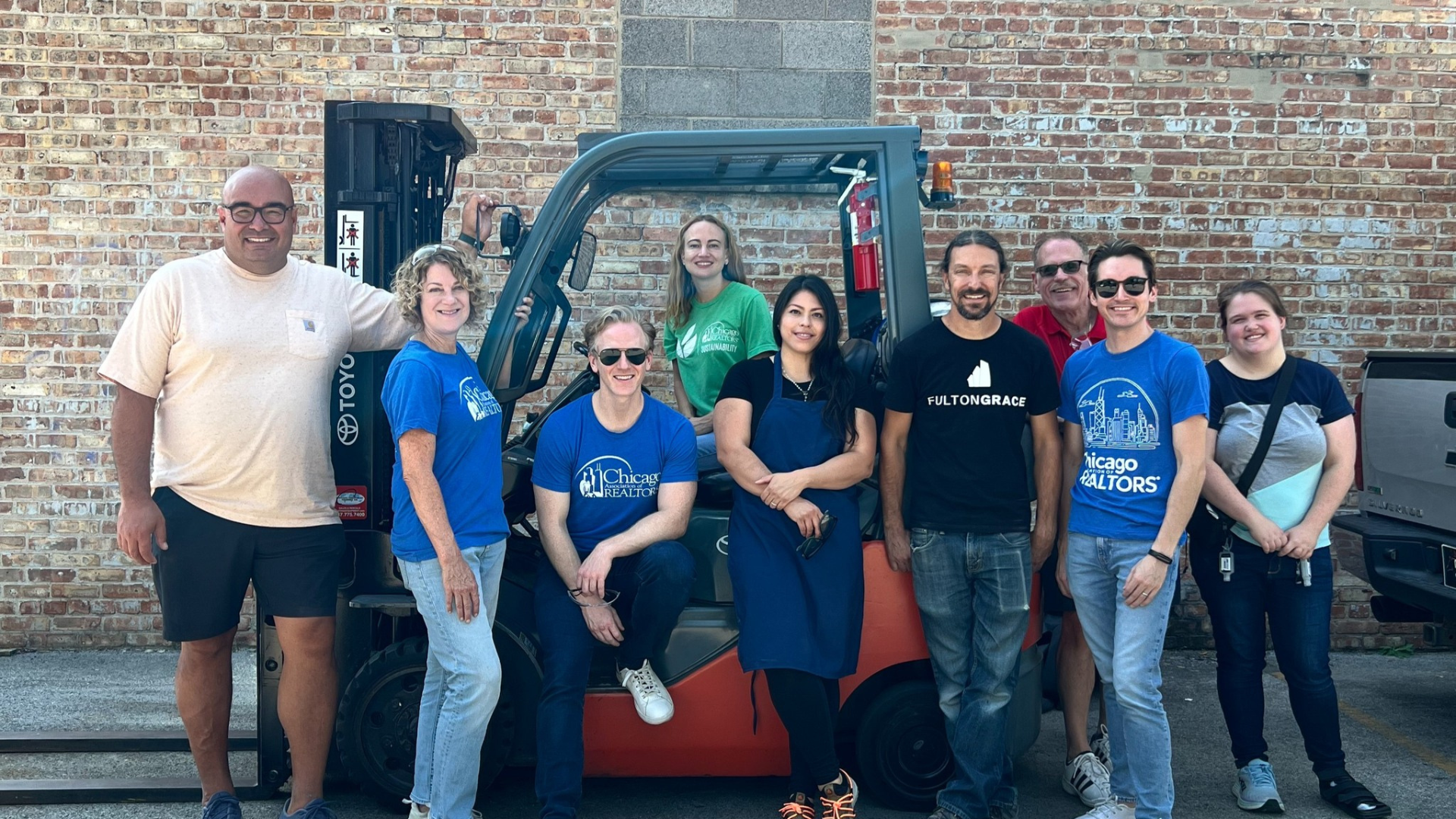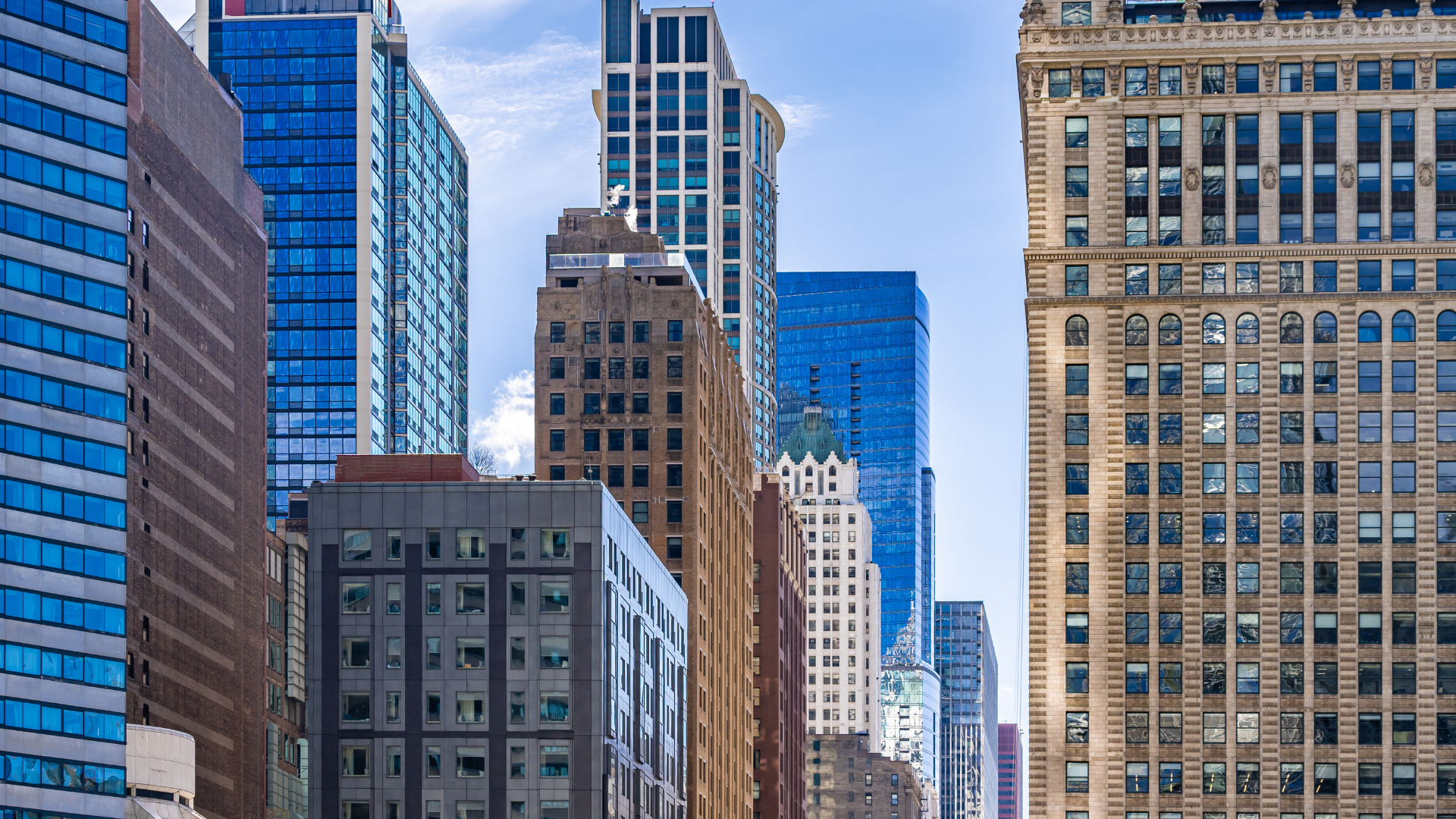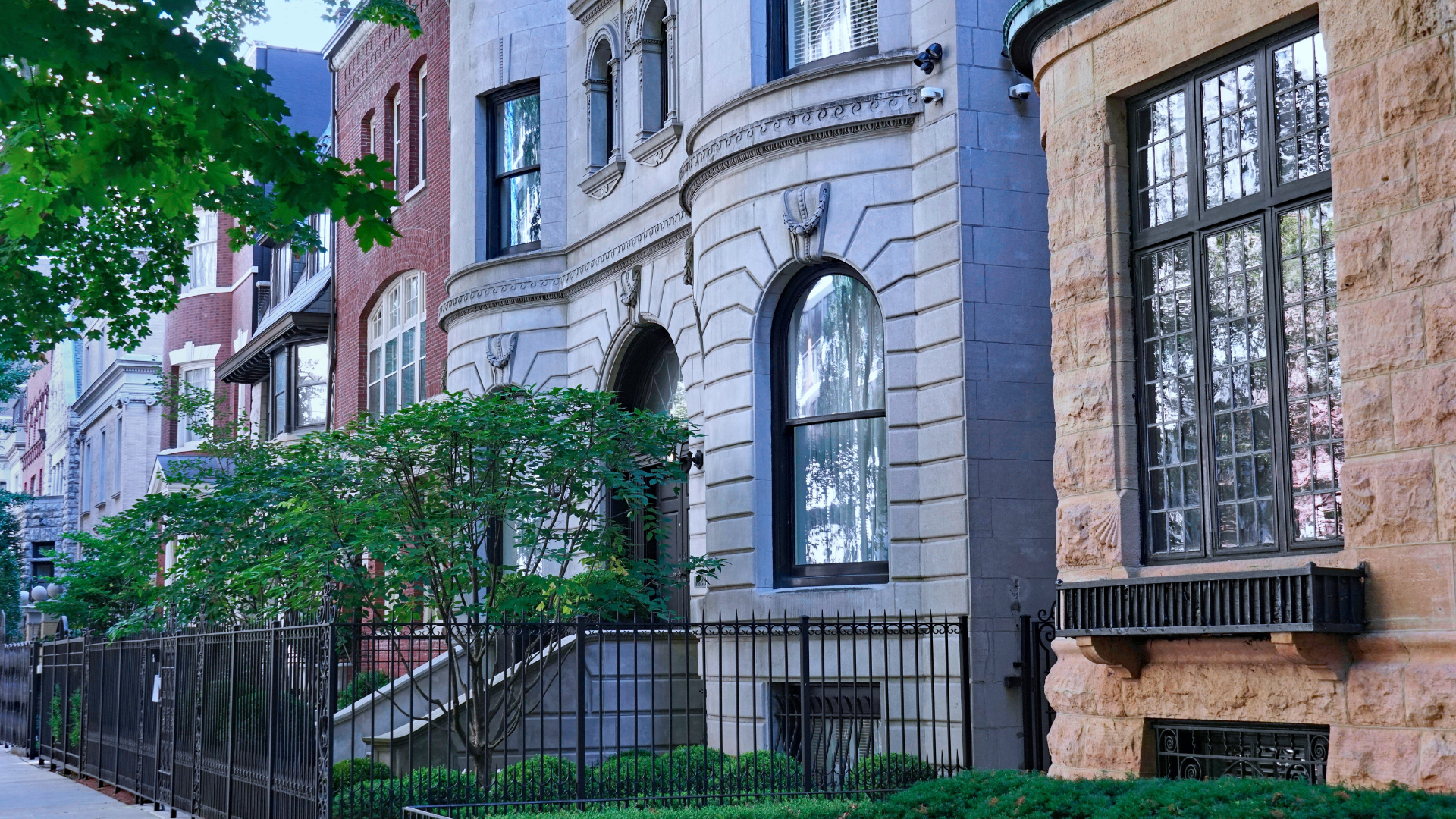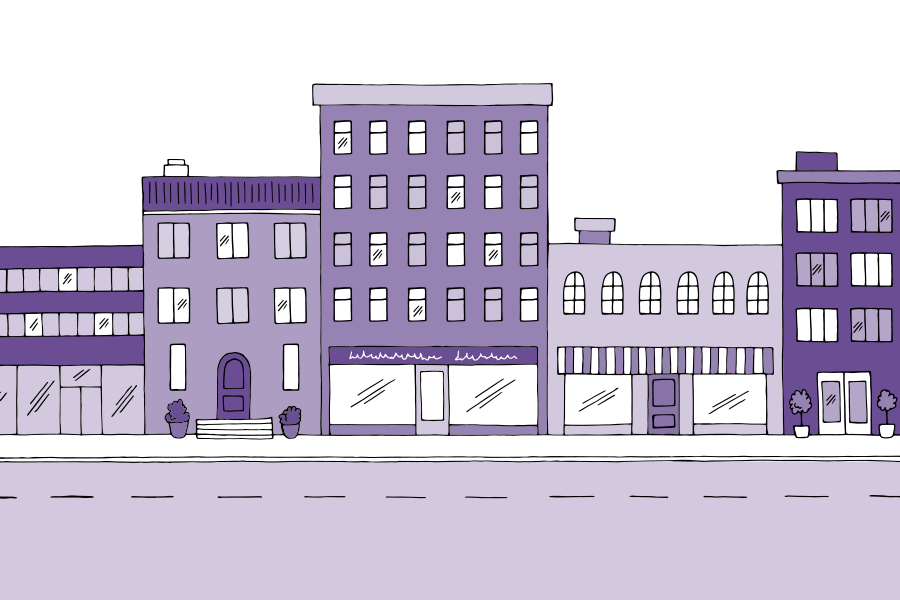Pick almost any neighborhood in Chicago, and you will discover varying versions of mixed-use buildings. From small mom-and-pop-type storefronts with apartments on the second level to self-contained vertical communities set within high rises to sprawling, master-planned, lifestyle suburban communities—Chicago’s mixed-used market is rich and diverse.
Our mixed-use market is unique compared to other cities, largely because we are home to 77 distinct communities—each with its own character and identity. Buildings have a way of corresponding to the needs and preferences of their respective neighborhoods.
Chicago’s rich architectural and cultural heritage also extends the mixed-use varieties through historical properties; industrial loft warehouses, fire stations or even churches, are often repurposed and integrated with modern design elements. Galleries and performance spaces blend the old with the new, creating an aesthetic that sets our mixed-use developments apart.
Also, our extensive public transportation network makes it easier for residents and visitors to navigate our metropolis, thus enhancing the appeal of mixed-use developments.
What Sets the Mixed-Use Market Apart
Because mixed-use properties encompass a variety of uses, such as residential, commercial and retail, these different components interact with the each other.
ZONING ORDINANCES
Look up your local zoning ordinances and land use regulations; if you plan to renovate, redevelop or reposition a mixed-use property, take note of permitted uses, building codes, parking requirements and other regulations specific to mixed-use developments.
For example, you might discover that the property will require a zoning variance or possibly even a zoning change to accommodate your plans. Similarly, a tenant interested in leasing the commercial component of the mixed-use property will also require this information as their ability to operate in your location may be adversely affected.
URBAN PLANNING & DESIGN
Mixed-use properties contribute to the urban fabric and should be designed with careful consideration of urban planning principles.
Think of Chicago’s Fulton Market area, flush with residences, restaurants, sidewalks designed for pedestrian-exclusive spaces and strategically placed murals. Nestled among the “L” tracks, its connectivity to public transportation and overall urban design creates a cohesive neighborhood feel.
NUANCED TENANT MANAGEMENT & OPERATIONS
Managing a diverse group of tenants in a mixed-use property requires an understanding of the needs and preferences of each tenant type. In Chicago, a difference between commercial and residential tenancies is the Chicago Residential Landlord and Tenant Ordinance (CRLTO).
Also, a mixed-use property will have different types of leases. For example, a residential lease is essentially a ‘gross lease,’ where the tenant pays, in addition to their utilities, a ‘gross’ amount of money each month to occupy the space. A commercial lease may be structured as a ‘gross lease,’ ‘modified gross,’ ‘net’ or even a ‘percentage’ lease. To further complicate the matter, certain commercial leases may also have provisions for the tenant to pay the owner a percentage of the property tax, insurance, common area maintenance and water bills.
Because of these differences, the management and operations of mixed-use properties can be more complex compared to single-use commercial properties.
Speaking of common areas—management and maintenance-wise, mixed-use properties often feature shared spaces and amenities, such as lobbies, corridors, elevators, parking facilities and common areas. It’s essential to manage and maintain these shared spaces effectively.
FINANCIAL CONSIDERATIONS
Mixed-use properties often require a different financial analysis and evaluation compared to single-use commercial properties. Consider the potential revenue streams, operating costs and financing options specific to mixed-use developments.
For example, revenue generated from residential leases is typically treated as ‘gross’ income, whereas a commercial lease (modified gross or net lease) would have certain of the owner’s expenses added back to the property’s gross potential income, making for a more complex analysis. In single-user commercial properties, ‘net’ leases are common—and in some cases—100% of the owner’s expenses are paid for by the tenant.
Take the time to assess the financial feasibility of the project based on the income generated from different uses and the potential synergies between them.
How to Break into the Market
Owning and operating mixed-use properties can seem as overwhelming as Hercules trying to slay the nine-headed Hydra. Don’t let this intimidate you! Here are some actionable steps to help you get started.
INVEST WITH INTENTION
In addition to your inherent creativity and gut instinct, act on a solid, specific investment plan. What are your investment goals? Ask yourself:
- Are you looking for long-term rental income, value appreciation or a combination of both? Clarify your investment criteria, such as budget, expected returns, risk tolerance and desired holding period.
- Will you manage the property yourself or hire a professional management company? Evaluate the cost and benefits of outsourcing property management and consider their expertise in handling this property type.
- Where are you looking for opportunities? Leverage the MLS, online commercial platforms, other REALTORS® and your personal/professional networks.
- What is your investment budget? Perform an honest assessment of your financial capacity and determine your investment budget while considering factors such as upfront costs, financing options, ongoing expenses and potential returns.
MARKET RESEARCH
When identifying target properties that align with your investment goals, consider factors such as location, potential for redevelopment or renovation and compatibility with the neighborhood’s character and needs.
Here’s a handy checklist of what should be accounted for in your financial analysis of a mixed-use opportunity:
- Zoning restrictions
- Environmental assessments
- Building inspection reports
- Potential construction costs
- Rental income potential
- Historical financial statements
- Existing lease agreements & historical occupancy data
- Operating expenses
- Potential risks
RISK ASSESSMENT
What is considered a risk? Market volatility, potential tenant turnover, regulatory changes and economic conditions are the big ones. When it comes to risk, you are determining the property’s potential for generating stable income and its resilience during economic downturns.
ASSEMBLE A TEAM
Formulate a team of professionals to support your venture, including architects, engineers, contractors, attorneys and property managers. It is crucial to collaborate with experienced professionals who have expertise in mixed-use development and can provide valuable advice and guidance throughout the process.
On the financing side, explore options such as traditional bank loans, private lenders, crowdfunding or partnerships. Before applying for financing, know your lender’s target footprint, lending capacity and appetite. Consider approaching a local Community Development Financial Institution (CDFI).
Collaborate with architects, designers and construction professionals to create a well-designed and functional mixed-use development while keeping the needs and preferences of potential tenants and the surrounding community top of mind.
BUILD LOCAL RELATIONSHIPS
In Chicago, you would be remiss if you failed to engage with city planners, zoning officials and other local authorities to ensure compliance and gain support for your project.
Introduce yourself to local stakeholders, residents and community organizations to understand their needs, concerns and aspirations. Post-closing, actively participate in community initiatives that foster a positive relationship with the neighborhood! This will help create a sense of place and enhance the property’s reputation.
What to Expect for the Future of the Mixed-Use Market
Despite ups and downs over the last few years, Chicago’s mixed-use market remains healthy and is proving to be resilient and tenacious.
Adaptive Reuse & Historic Preservation: There is a growing emphasis on adaptive reuse and historic preservation. Developers are likely to repurpose existing buildings, especially historic structures, to create developments that blend the charm of the past with modern amenities and design. This trend ensures the preservation of the city’s architectural legacy while meeting the demands of a contemporary urban lifestyle.
An example of this is former Mayor Lightfoot’s LaSalle Reimagined Initiative, which will convert underutilized office spaces in the historic
downtown market into residential units.
Sustainability & Green Initiatives: As environmental consciousness continues to rise, developers will integrate eco-friendly features such as energy-efficient designs, green roofs, renewable energy sources and sustainable transportation options. Chicago’s commitment to sustainability, as exemplified by its Climate Action Plan, will likely influence other mixed-use projects in the city.
Technology Integration: The rapid advancement of technology manifests in the form of smart building systems; for example, internet connectivity will be integrated into properties to enhance convenience, security and efficiency.
Health & Wellness Considerations: The COVID-19 pandemic brought health and wellness to the forefront—re-shaping how future mixed-use developments are likely to incorporate features that promote the well-being of residents and visitors.
Enhanced air filtration systems, touchless technologies, ample outdoor spaces, fitness amenities and access to nature are just some of the ways this will take root.
Enhanced Community Spaces: The importance of community and social connections has become even more apparent during the pandemic. Future developments will likely emphasize vibrant and
inclusive community spaces, such as the incorporation of public plazas, parks, gathering areas and cultural spaces that foster social interaction and create a sense of belonging among residents and visitors.
Emphasis on Equity & Inclusion: This is manifesting in a variety of ways:
- The city’s Affordable Requirements Ordinance (ARO), which incentivizes developers to create more affordable housing.
- The SRO Preservation Ordinance and SRO Preservation Initiative, which disincentivizes developers from converting this endangered housing type into market-rate housing.
Anecdotally, this author is working with the city and their preferred Permanent Supportive Housing (PSH) provider, Renaissance Social Services, to reposition two SROS—one of which is a mixed-use property—into newly gut-renovated, first-class PSH developments.
Transportation Integration: Transit hubs and multimodal transportation options will become even bigger priorities to accommodate the growing demand for car-free or car-light lifestyles. Projects that provide easy access to public transportation and incorporate bicycle and pedestrian infrastructure will likely be in high demand.
WANT TO DIVE DEEPER INTO THE MIXED-USE MARKET?
Our affiliated real estate school, the REALTORS® Real Estate School, offers a continuing education elective written and taught by Scott Siegel called Analyze & Underwrite Multi-Unit & Mixed-Use Properties.
In class, learn how to assess the viability of an investment property by becoming proficient in analyzing and underwriting the asset from both an investor’s and a banker’s perspective.
Visit ChicagoREALTOR.com/CE to register for an upcoming date.








